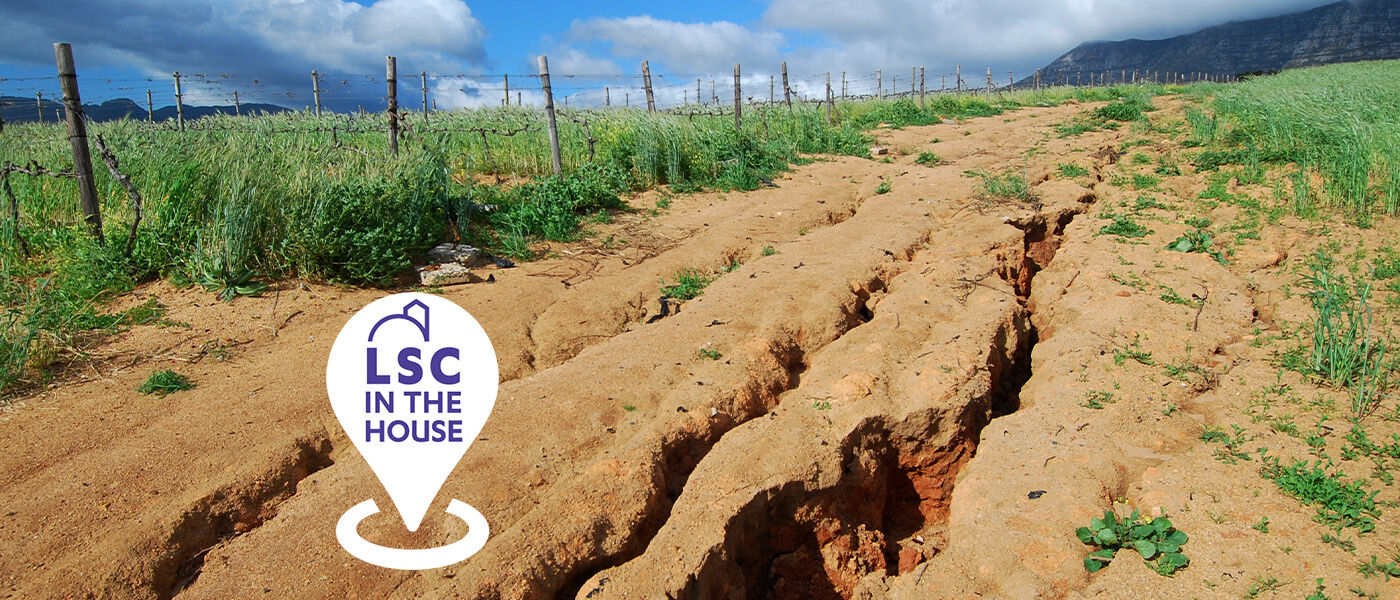The Roots of Erosion
Activity Time: Multiple days
Recommended Grades: 3 - 8
Objective: Model and observe the impacts of deforestation in this hands-on experiment. Then design solutions to prevent soil erosion.

- Three clear plastic bottles (16 to 20 oz.)
- Potting soil (enough to half-fill the three bottles)
- Dead vegetation (twigs, bark, leaves, dead roots)
- Plant seeds (basil, cress, chives, and mint grow quickly)
- Scissors
- String
- Three clear plastic cups
- Water

1. Cut the three bottles in half lengthwise up to the bottleneck, but leave the top and cap intact. Set the three capped pieces, cut sides up, on a flat, stable surface where they will remain for the next few weeks. The mouths of the bottles should hang over the edge of the table about an inch. An adult can help you permanently affix the bottles to a piece of plywood or other sturdy surface for stability, using a hot glue gun.
2. Fill each bottle with the same amount of soil. Pack in as much as possible.
3. Hang the clear plastic cups from the bottlenecks to collect water after it passes through the soil. To hang them, punch two holes opposite each other just below the cup rim and make a loop with string.
4. You are now ready to set up your “forest.” Spread seeds in the first bottle and cover them lightly with soil. Over the next few days, expose the “forest” to sunlight and mist it lightly with water. Do not allow it to become soggy. To speed up germination, set the cut-away piece back onto the bottle, creating a mini greenhouse.
5. Spread dead vegetation on the soil in the second bottle.
6. Leave the third bottle filled with just dirt.
7. Once the plants in the first bottle are well developed, you are ready to continue your experiment. Remove the caps. Each day, pour equal amounts of water into the bottles at the end farthest from the cap. Predict what water will look like after it has passed through each bottle. Observe.
8. Make connections to real-world scenarios. How can the results of your experiment be used to design solutions to existing problems? Note the role that vegetation plays in reducing soil erosion. You should observe that water flowing through the first bottle is nearly clear. The water that flows through the second and third bottles will become progressively more filled with silt.

As the seeds germinate, root balls start to form, slowing the movement of water through the soil. Since it picks up very little runoff, the water is relatively clear. In the other two bottles, the faster-moving water can carry more soil particles, which can be seen in the water. We see the same results along highways and stream banks where trees, bushes, or other vegetation has been removed. Dirt-laden water flows into roads, streams, and rivers, stripping nutrient-rich soil from the land.
